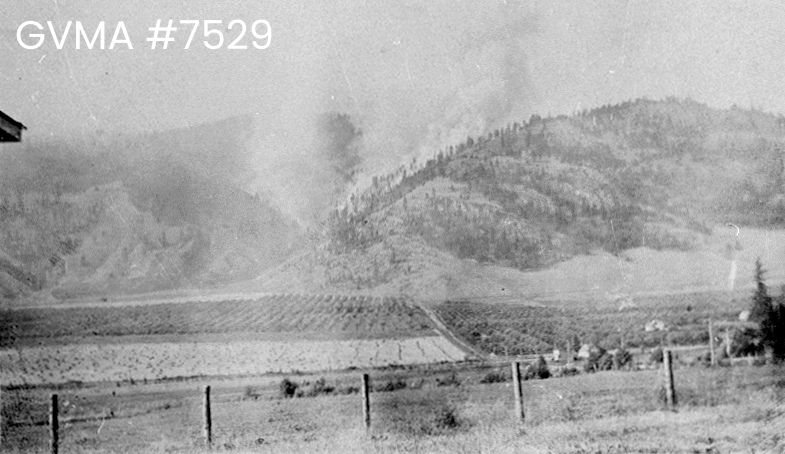
2023 has been reported as Canada’s worst fire season. Although this fact cannot be denied, it may or may not provide some comfort to know that folks in and around Vernon have been battling blazes for hundreds of years.
Traditionally, the Indigenous inhabitants of the Okanagan-Similkameen areas practiced controlled burning as a means to maintain forest and grassland ecosystems. Once settlers arrived in the area, the Vernon News, then a farm and livestock journal, often featured advice on how to protect one’s property from fire damage. For example, an 1894 article states, in no uncertain terms, that “the cutting and clearing away of the forest for a radius around the settlement sufficient to ensure safety would be neither an expensive nor a laborious undertaking.”
A heatwave in May of 1901 wreaked havoc on the Valley, and the South Okanagan was particularly hard-hit. A forest fire near what is now the Nickel Plate Nordic Centre outside of Penticton saw bridges and culverts burn down, and fallen timber litter the road. At the same time, the whole town of Fairview (now a ghost town) came out to fight a fire that was creeping towards their properties down a nearby gully.
In 1912, the newspaper printed “Six Good Rules for Care with Fire in the Mountains,” one of which was a reminder to knock out one’s pipe ashes or throw cigar and cigarette stumps only where there is nothing to catch fire. In 1922, the “cigarette menace” was once again discussed, with the paper reporting that hundreds of the fires recorded that year in Canada were “due to the evil habit of tossing away lighted tobacco.”
Sometime in the late 1920s, Silver Star Mountain experienced a devastating fire, which was unfortunately not unusual for the region as evidenced by the installation of a forest fire lookout at the mountain’s summit more than two decades earlier. In the spring of 1930, Bill Osborn, David Ricardo, and Michael Freeman became among the first to ski down the mountain – and later described seeing a number of snags (still-standing dead trees) that have been destroyed by this fire a few years earlier.
In July of 1940, a series of forest fires ravaged the Sugar Lake area. Men were pulled away from their homes and work to fight the blazes, which finally abated thanks to heavy rain. In 1950, a mid-summer fire at Kingfisher was finally brought under control after several long weeks. Fires continued to ravage the Okanagan Valley in the years following, including the unforgettable White Rock Lake fire of 2021.
Thankfully, the area’s inhabitants have demonstrated their resiliency in the face of nature’s wrath time-and-time again, helped along at times by some much-needed rain.
To explore more of Vernon’s history, check out our other blog posts!
Gwyneth Evans, Head of Archives
